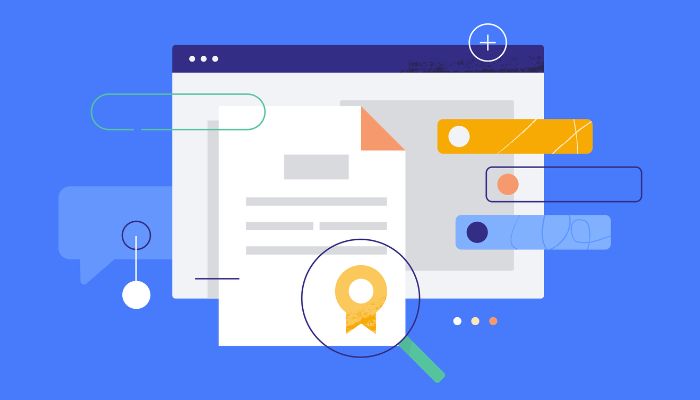I’ve been a digital marketer for over seven years, and I’m always looking for ways to improve my SEO and make my clients’ websites better. I was excited to try out Coursera’s new SEO Basics course when I found it not long ago. After finishing the course, I can say with certainty that it’s one of the best ways to learn the basics of search engine optimization right now. Read below about “How to Transform Your Website with Coursera’s Latest SEO Basics Course”.
I learned a lot from the course, and I’ll tell you how you can use Coursera’s SEO training to improve your website and get more free traffic in this article.
Table of Contents
How SEO Works and Why It’s Important
That is what the first module is all about: what SEO is, how search engines like Google work, and why it is important for any business website to be optimized for them. Even though I already knew a lot about SEO, this was a great way to brush up on what I knew. It talks about how SEO can help people find your site, connect with your ideal customers, and get more qualified leads and sales.
It’s important to start with the basics of SEO, even if you learn a few tricks along the way. This module lays the groundwork for that. It’s a great way for people who are new to search engine optimization to learn how important it is in today’s digital world.
Looking into keywords
When the course really got me excited was when we did keyword research. It shows a tried-and-true three-step framework for keyword research:
- Come up with broad seed keywords.
- You can get keyword ideas from tools like Google Keyword Planner.
- Use search volume, competition, relevancy, and other factors to narrow down and rank keywords.
Because I know a lot about SEO, my favorite part is researching keywords. With the right keywords, you can make sure that your content and SEO work is focused on exactly what your audience is looking for.
This module was great because it taught me new ways to do keyword research. For example, looking at the keywords that your competitors rank for can help you find new business opportunities. You will learn how to use Google Site Search to do this in the course. Overall, this course has helped me improve the way I do keyword research.
Optimizing Website Content
The content optimization module goes into detail about the best ways to do on-page SEO. It talks about things like
- Crafting meta titles and descriptions
- Using keywords naturally in your content
- Optimizing images with alt text
- Structuring pages and content with SEO in mind
Some new things I need to pay attention to on the page are using keywords in the first 100 words of content and adding links to other pages that are related. The course also showed how to optimize blogs and videos in particular.
What I learned is that well-optimized content not only makes the user experience better, but it also does better in search engines. I can better set up websites for natural growth if I use the strategies in this module.
Measuring and Monitoring SEO Results
No matter how good your SEO is, how will you know if it’s working? The module for measurement and tracking shows you how to link your work to real business results.
I really liked learning how to use Google Search Console to keep track of where keywords are ranking. In this way, you can see how you rank for your target keywords and see where you can still make improvements. Some other important lessons are:
- Google Analytics is used to see where traffic comes from and how it gets there.
- Do A/B tests on pages to see which content works better.
- Using tools like Moz Local to keep an eye on your local SEO rankings.
- Making reports so that stakeholders can see what you’ve learned.
Learning how to measure things in real life gives me the confidence to talk about results and return on investment (ROI) with SEO clients in the future.
Key SEO Concepts to Remember
Here are some main ideas I’ll remember after finishing Coursera’s SEO Basics course:
- SEO is not a quick fix; it’s a process that you stick with. Over time, you need to keep optimizing and improving different parts of your website.
- Good SEO starts with high-quality content that answers the questions that people are searching for. The goal is to make people happy, not just search engines.
- Local SEO is very important for companies that have stores. Local visibility is improved by optimizing Google My Business listings.
- Page speed affects your organic search rankings, so making images better and allowing compression can help.
- One of the best SEO signals is still links. A smart way to build links is to get good backlinks from sites you can trust.
Your approach to optimization should be based on keyword research. Find targets with low competition and high volume first.
SEO progress can be seen by measuring with Search Console, Analytics, and rank tracking.
I’m ready to get results for both my own website and my clients as long as I remember these basic rules.
Transform Your Website with Coursera’s SEO Basics
The quality of the material and instruction in Coursera’s SEO Basics course really impressed me when I think back on my time there. The modules teach you a lot about the best ways to do search engine optimization. When I use what I’ve learned, I expect the following real-world benefits:
- By ranking for valuable keywords, you can get more traffic from organic search and lower your cost-per-click.
- SEO traffic to landing pages and calls to action led to more sales and leads.
- Better website user experience that makes it easy to look around.
- By making Google My Business better and creating localized content, you can get more local customers.
- SEO analytics and reporting give you a better picture of how well your content is doing.
- Faster website speed and mobile optimization so you can search while you’re out and about.
I strongly advise anyone who wants to change their website’s natural growth to take Coursera’s SEO Basics course. The teacher explains concepts that are very important in today’s SEO world. This course will help you improve your skills whether you are a business owner, marketer, or agency worker.
So go over the basics again, learn some new tricks, and get ready to put together a powerful SEO plan. Without using only paid ads, you can make your website more visible and get more visitors if you pay attention to it and make it work better. Coursera has taught you what you need to know to improve your website’s search engine optimization.

Shivam Mishra is the lead writer at webcourses.in, where he shares his expertise in web development, particularly in the MERN stack (MongoDB, Express.js, React, Node.js). With a solid foundation in Java and Data Structures & Algorithms (DSA), Shivam creates content that resonates with developers and tech enthusiasts alike. As a former Web Development Club Captain, he has led projects like an Air-BNB replica and a YouTube clone. Recognized as a two-time CODE-Hunt winner and LinkedIn Top Voice in Web Development, Shivam brings a wealth of knowledge to every article.
Connect with Shivam on LinkedIn.

